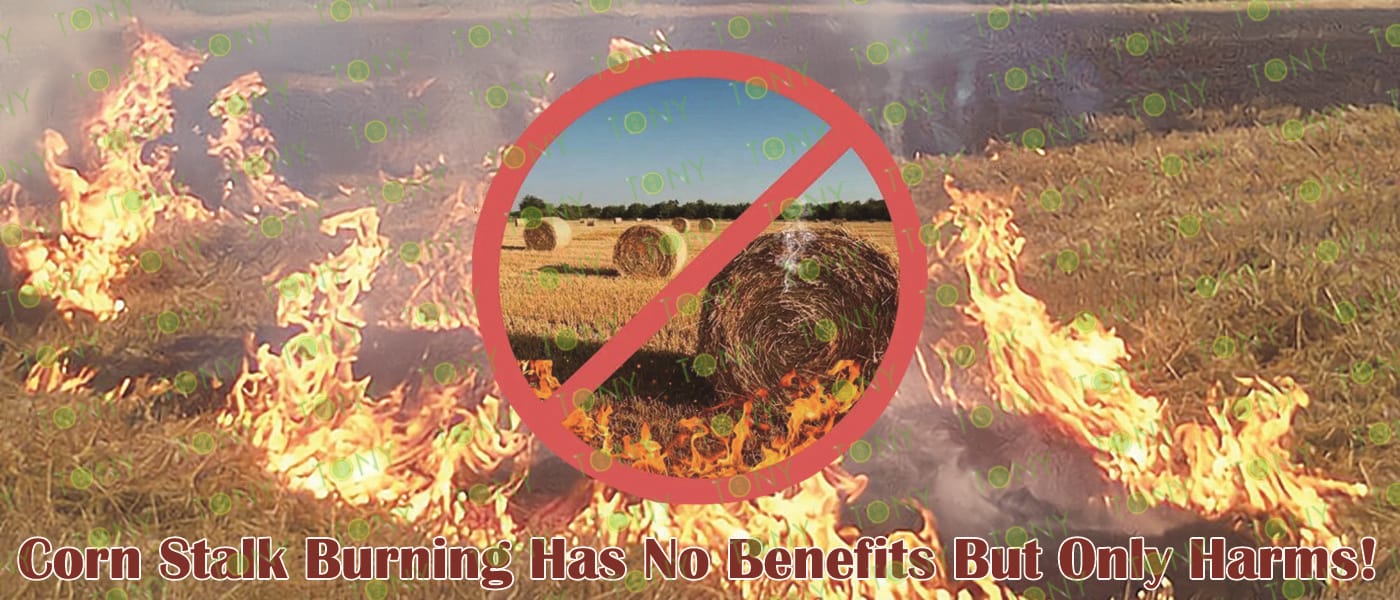A lot of straw waste is generated every year. How can we make rational use of them? The straw pellet machine is a biomass pellet fuel forming machine that uses corn stalks, cotton stalks, soybean stalks, rice stalks, wheat stalks, wood slabs, wood powder, wood chips, rice husks, peanut husks, peanut husks, peanut husks, etc. as raw materials. Granules made by straw pellet machines can be used in fireplaces, boilers, gasifiers, and biomass power plants. The use of tony straw pellet machine reduces straw waste and improves the comprehensive utilization of straw.
The main hazards caused by straw burning are:
1. Cause traffic accidents, affecting road traffic and aviation safety. The smoke formed by burning straw causes a decrease in air visibility and a decrease in visible range, which directly affects the normal operation of civil aviation, railways, and highways, which can easily cause traffic accidents and affect personal safety.
2. Causes fire. Straw burning is very easy to ignite the surrounding flammable materials, resulting in "fire burning". Once a large wheat field fire is triggered, it is often difficult to control and cause economic losses. Especially near the mountains and forests, the consequences are even more unimaginable.

3. Destroy the soil structure and cause a decline in farmland quality. Straw burning also enters the ground three parts, microorganisms on the surface are burned to death, humus and organic matter are mineralized, and the burning of straw in the fields destroys the balance of this biological system, changes the physical properties of the soil, aggravates soil solidification, destroys ground abilities, and aggravates drought, which affects the growth of crops.
4. Generate a large number of toxic and harmful substances, threatening the health of humans and other organisms. Straw is a good clean and renewable energy source. The calorific value of every two tons of straw is equivalent to one ton of standard coal, and its average sulfur content is only 3.8‰. The average sulfur content of coal reaches about 1% during the regeneration of biomass. During the process of biomass regeneration, the emitted CO2 and the CO2 absorbed during biomass regeneration reach carbon balance, which has the effect of zero CO2 emissions, and will make important contributions to alleviating and solving the problem of greenhouse effect.





















